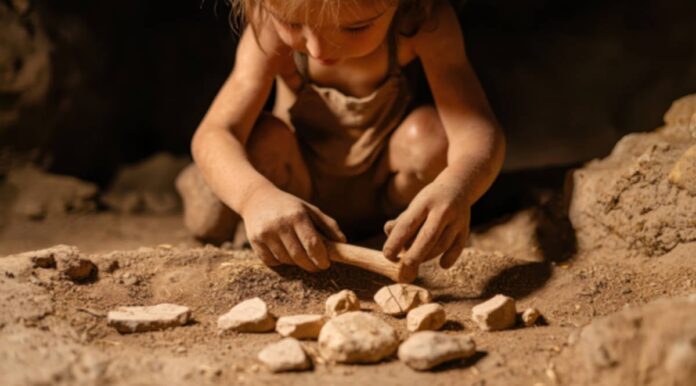A recent discovery in a Neanderthal cave in northern Spain has uncovered 15 marine fossils, suggesting that our extinct ancestors may have been collectors, similar to our own tendencies with certain small objects and keepsakes. While concrete evidence is lacking to fully trace these findings, there is a strong indication that Neanderthal children engaged in this advanced cognitive behavior, infusing everyday items with symbolic significance!
Neanderthals Were More Than Just Primitive Creatures
The ongoing debate surrounding Neanderthal intelligence falls on a spectrum, and although collecting may seem like a basic behavior, it hints at both abstract thinking and a sophisticated imagination. This discovery also indicates that the act of hoarding and collecting existed before anatomically modern humans, adding a weighty dimension to the discussion.
The authors of the research published in the journal Quatenary suggest:
“These fossils can be seen as evidence of an artistic interest or a fascination for the forms of nature. It’s possible that, similar to modern times, individuals who gathered these items found joy in the search, discovery, and preservation process.”
The collection found at the Prado Vargas cave is unique due to the fact that most previous assemblages consisted of only one or two items. Coupled with the presence of Neanderthal children’s remains at the site, researchers speculate that these patterns of collection mirror those seen in modern children – who enjoy accumulating stickers, seashells, and trinkets; a behavior that seems to have been shared by Neanderthal children.
Marine fossils excavated at the Prado Vargas Cave, Cornejo, Burgos and Spain. (Ruiz, M.N., et al. 2024/Quatenary)
There are multiple instances of the ancient Neanderthals engaging in artistic practices, caring for their elders and disabled members, and even developing religious rites, such as worshipping a ‘bear cult’. The outdated stereotype of Neanderthals being slow and unintelligent has skewed our understanding of our ancestors, but ongoing research is proving otherwise.
Neanderthals Across Europe: A Pattern of Hoarding Behavior
Just recently, it was revealed that Neanderthals from 70,000 years ago collected and deposited the skulls and horns of large animals like bison, wild bulls, deer, and rhinoceros – a total of 35 skulls were found. Other discoveries from European sites, like Cueva Anton in Murcia, show perforated shells used as ornaments in the Cueva de los Aviones.
Neanderthals from the Bruniquel Cave in France seemed to intentionally collect mineral formations like stalactites and blocks of manganese dioxide, while evidence from other European sites indicates that Neanderthals gathered bird feathers and claws, likely for decorative or symbolic purposes. With several examples supporting this idea, it seems plausible that Neanderthals were among the first collectors.
The fossils found at the Prado Vargas cave date back between 39,400 and 54,600 years ago, at a time and location without any Homo sapiens presence. The researchers note:
“the Neanderthals inhabiting the Prado Vargas cave gathered and kept fossils, similar to how we collect fossils, including those of our own species, for study and display in museums. This creates an infinite loop where, eventually, we will become part of what we collect.”
An interesting observation is that the flora and fauna found in the area suggest cold and humid conditions, with pine trees for fuel, and a diet based on deer, goats, and other animals. The presence of mainly mollusks and echinoderms among the fossils raises questions about their purpose in a location far from the sea.
Top image: Neanderthal child playing with a collection of stones. Source: Sippung/Adobe Stock
By Sahir Pandey




